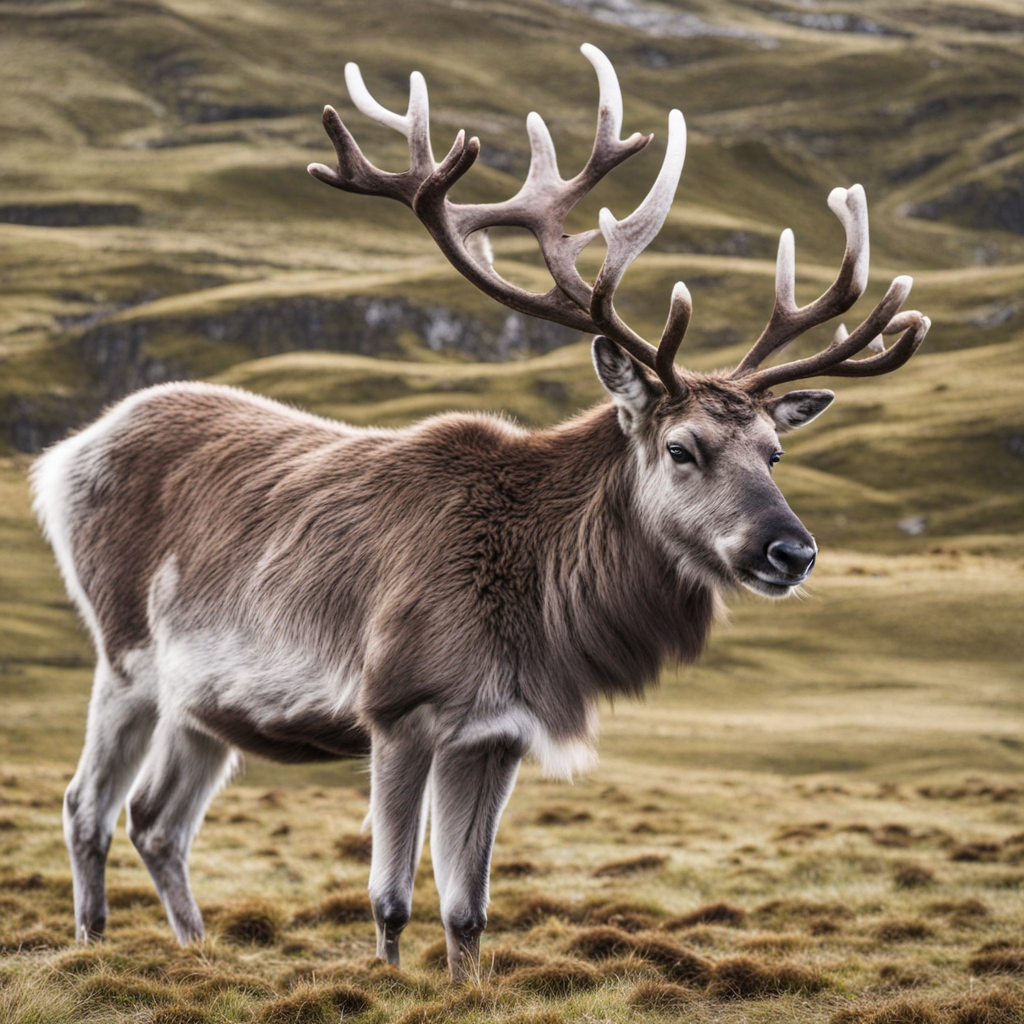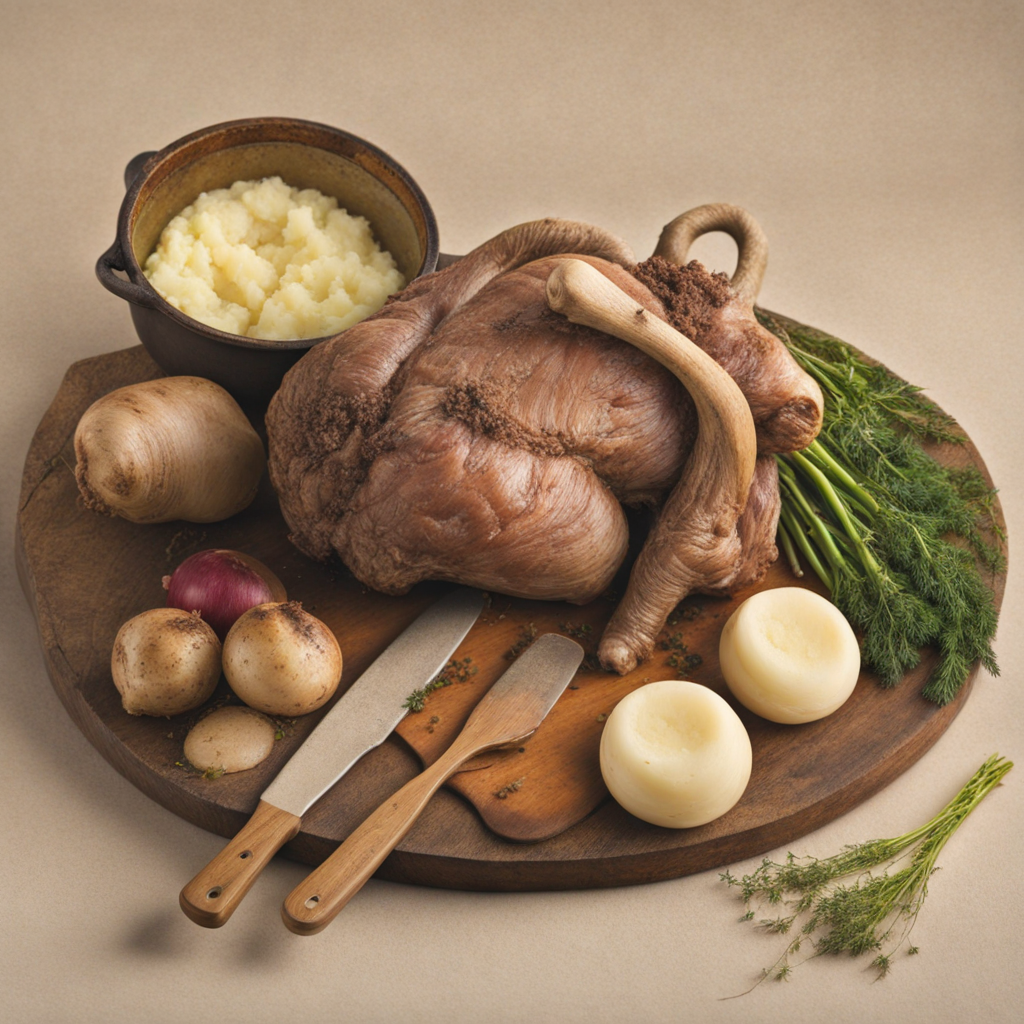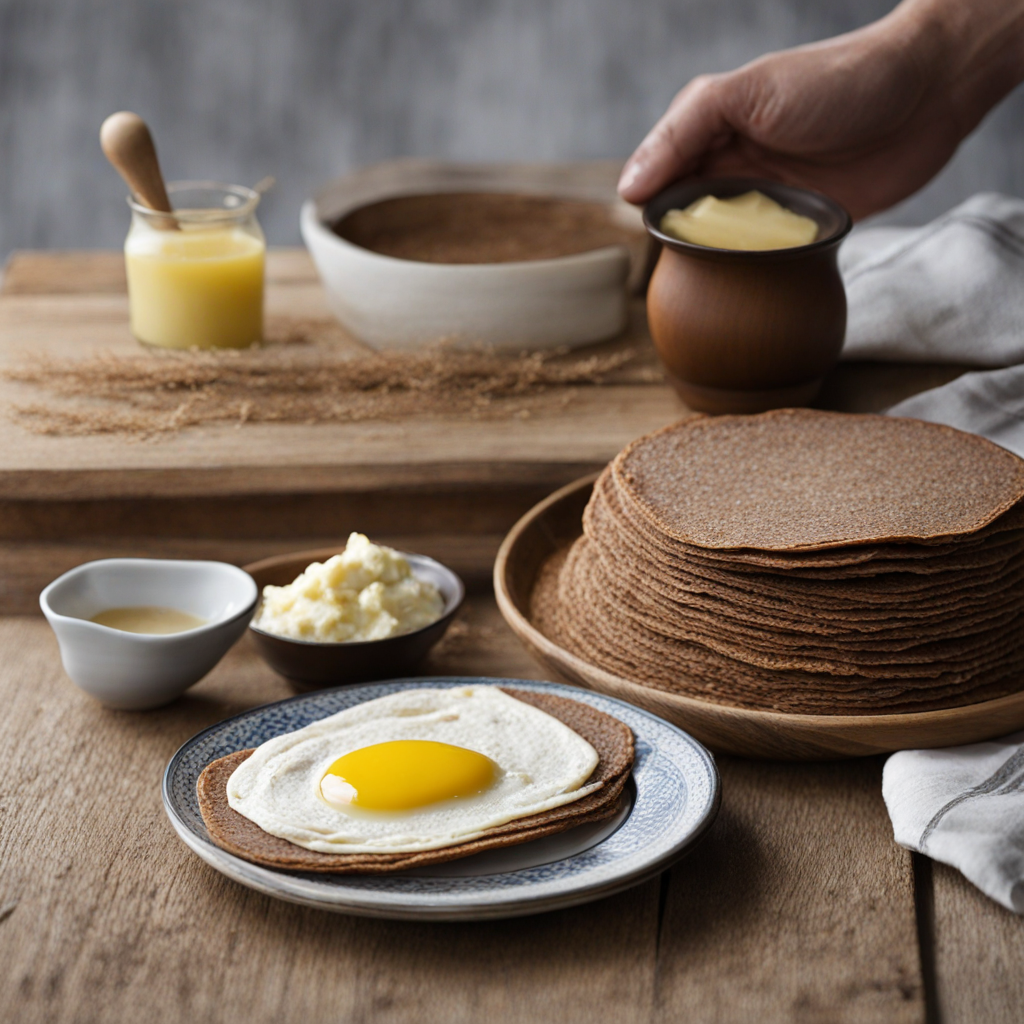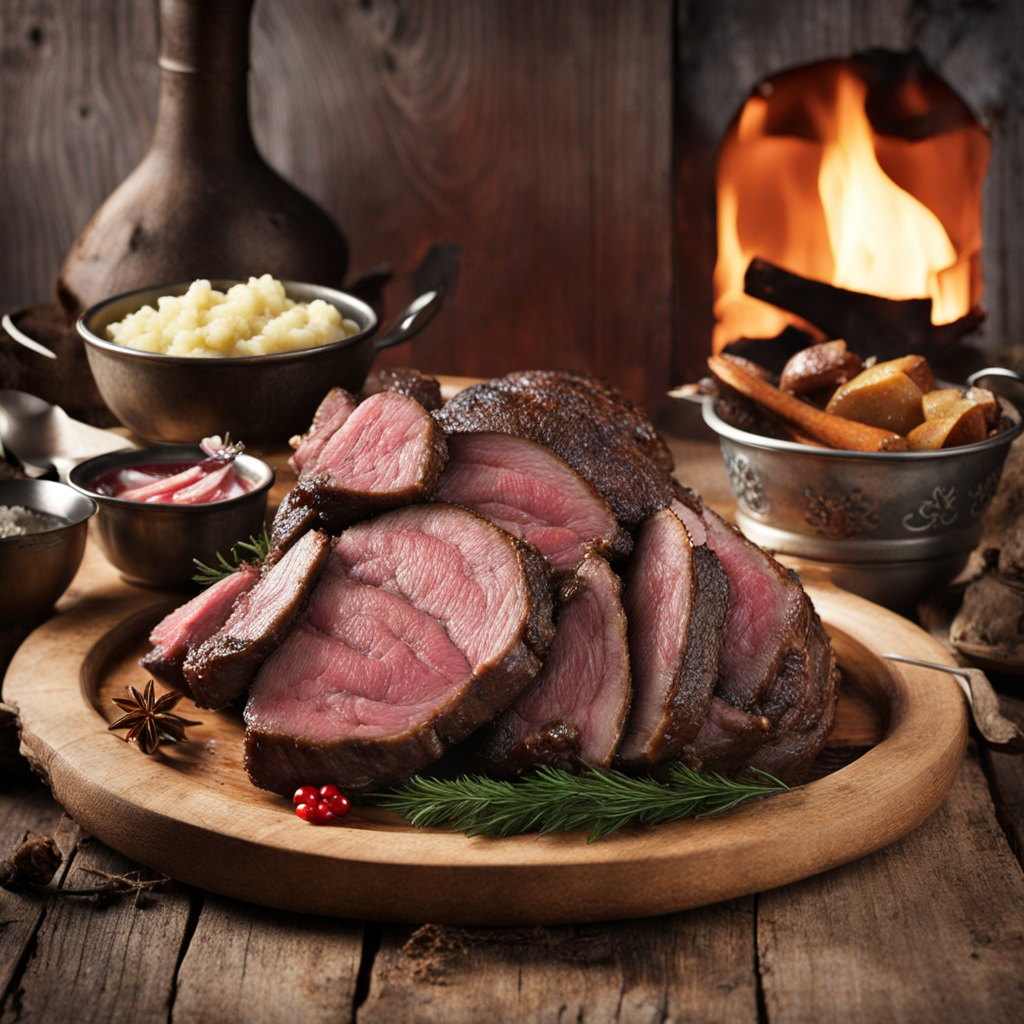Reindeer
Reindeer meat in Iceland is a unique and flavorful delicacy that captures the essence of the rugged landscape and rich traditions of the region. The meat is lean, tender, and has a slightly sweet, gamey flavor that distinguishes it from more commonly consumed meats. It is often prepared using traditional methods, such as slow roasting or stewing, which help to enhance its natural flavors while ensuring the meat remains moist and succulent. The texture of reindeer meat is fine-grained, making it perfect for a variety of dishes, from hearty stews to elegant roasts. In Icelandic cuisine, reindeer is frequently paired with local ingredients like root vegetables, wild berries, and herbs, creating a harmonious balance of flavors that reflects the country's natural bounty. One popular dish is the reindeer stew, often simmered with potatoes, carrots, and onions, allowing the rich flavors to meld together beautifully. Another standout is the smoked reindeer, which offers a delightful depth of flavor and is often served as part of a charcuterie board, accompanied by artisan cheeses and crusty bread. The experience of tasting reindeer meat is not just about the food itself; it's also about the connection to Iceland's history and its Indigenous culture. For those who appreciate the taste of game meats and are eager to explore new culinary horizons, reindeer offers an exciting opportunity to enjoy a dish that is both deeply rooted in tradition and uniquely timeless. Whether enjoyed in a cozy restaurant or prepared at home, reindeer is a dish that promises to tantalize the taste buds and provide a memorable gastronomic adventure.
How It Became This Dish
Origin of Hreindýrakjöt Hreindýrakjöt, or reindeer meat, has deep roots in the culinary traditions of Iceland, reflecting the island's unique geography and cultural history. The introduction of reindeer to Iceland dates back to the late 18th century, when they were brought in from Norway. These animals were initially introduced as a means for the Icelandic people to diversify their livestock, as traditional farming practices were often challenged by the harsh climate and limited agricultural land available on the island. Over time, the reindeer population grew and adapted to the rugged terrain of Iceland, establishing itself as a vital part of the local ecosystem. The significance of reindeer meat in Icelandic culture cannot be overstated. For centuries, the indigenous population relied on this robust source of protein as a staple in their diet, especially during the harsh winter months when other food sources were scarce. Hreindýrakjöt became a symbol of sustenance and survival, embodying the resilience of the Icelandic people in the face of adversity. The meat is known for its rich flavor and lean quality, making it a prized ingredient in traditional dishes and a key component of local culinary identity. \n Cultural Significance In Iceland, Hreindýrakjöt is more than just a food item; it is a cultural artifact that tells the story of survival and adaptability. The meat is often associated with traditional hunting practices, which have been an integral part of Icelandic heritage. The hunting of reindeer is typically regulated by the government, with specific seasons designated for hunting to ensure sustainable population levels. This careful management reflects the respect Icelanders have for nature and their commitment to preserving the environment. Hreindýrakjöt holds a special place in Icelandic celebrations and gatherings, particularly during festive seasons such as Christmas and Þorrablót, a midwinter festival. During these times, the meat is often prepared in various traditional ways, including slow-roasting or smoking, which enhances its rich flavor. These dishes not only nourish the body but also serve as a means of connecting with Icelandic ancestry and fostering a sense of community among those who gather to share a meal. \n Development Over Time As the culinary landscape of Iceland evolved, so too did the preparation and consumption of Hreindýrakjöt. In the early 20th century, the increased availability of reindeer meat led to more experimentation in the kitchen. Chefs began to incorporate reindeer into a variety of modern dishes, blending traditional techniques with contemporary flavors. This fusion approach exemplifies the adaptability of Icelandic cuisine, as it embraces both its historical roots and the influences of global culinary trends. With the rise of the farm-to-table movement in recent years, there has been a renewed interest in locally sourced ingredients, including Hreindýrakjöt. Chefs and home cooks alike have sought to highlight the unique flavors and textures of reindeer meat, often pairing it with seasonal vegetables and local herbs to create dishes that celebrate Iceland’s natural bounty. This trend not only preserves traditional cooking methods but also elevates Hreindýrakjöt to new culinary heights, showcasing its versatility in modern gastronomy. \n Modern-Day Consumption Today, Hreindýrakjöt can be found in various forms across Iceland, from artisanal products in local markets to gourmet offerings in high-end restaurants. The meat is typically sold as steaks, sausages, or cured products, catering to a diverse range of palates. The growing popularity of reindeer meat has also led to increased awareness about its health benefits, as it is low in fat and high in protein, making it an attractive option for health-conscious consumers. Tourism has played a significant role in the resurgence of Hreindýrakjöt as well. Visitors to Iceland are often eager to experience traditional Icelandic cuisine, and reindeer meat is frequently featured on menus across the country. Restaurants take pride in presenting locally sourced dishes that reflect Iceland's culinary heritage, and Hreindýrakjöt has become a sought-after delicacy for tourists looking to immerse themselves in the local culture. \n Environmental Considerations The sustainability of Hreindýrakjöt also warrants attention in discussions about its consumption. Iceland's government has implemented strict regulations regarding reindeer hunting to ensure that the population remains stable and healthy. This commitment to sustainable practices resonates with the global movement towards environmentally conscious eating. As more people become aware of the ecological impact of their food choices, Hreindýrakjöt stands out as a responsible option that supports local farmers and minimizes carbon footprints. Moreover, the traditional methods used in hunting and preparing Hreindýrakjöt emphasize a deep respect for nature and wildlife. This connection to the land is a key aspect of Icelandic culture, and it underscores the importance of preserving natural resources for future generations. As Iceland continues to navigate the challenges of modernity and climate change, the appreciation for Hreindýrakjöt serves as a reminder of the balance between human needs and environmental stewardship. \n Conclusion In conclusion, Hreindýrakjöt embodies the rich history and culture of Iceland. Its journey from the introduction of reindeer in the 18th century to its status as a modern culinary delight showcases the resilience and adaptability of Icelandic cuisine. As a source of sustenance, a symbol of cultural heritage, and a testament to sustainable practices, Hreindýrakjöt continues to play an important role in the lives of Icelanders and the culinary landscape of the nation, inviting both locals and visitors alike to experience the unique flavors and history of this remarkable food.
You may like
Discover local flavors from Iceland







